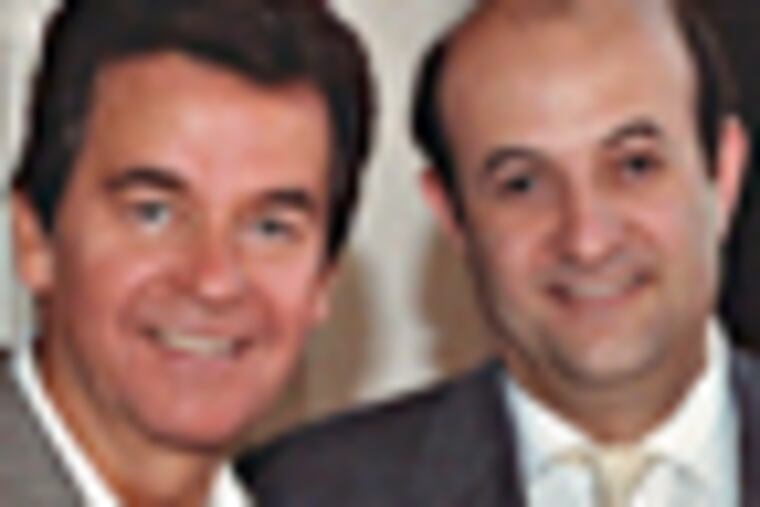News of Dick Clark's death hits 'Bandstand' regulars hard
The news hit hard. Bunny Gibson was a kid when Dick Clark came into her life - or, rather, when she entered his world in Studio B at 46th and Market Streets in West Philadelphia.

The news hit hard.
Bunny Gibson was a kid when Dick Clark came into her life - or, rather, when she entered his world in Studio B at 46th and Market Streets in West Philadelphia.
"When I walked through those doors, that was the only place I wanted to be," said Gibson, 66, an actress who now lives in Los Angeles.
She was 13 but lied about her age. American Bandstand only allowed dancers from 14 to 18. "I put a lot of my mom's makeup on and stuffed my bra," said Gibson.
When she heard the news of Clark's death Wednesday, Gibson immediately headed to Hollywood to be with other former Bandstand regulars at Clark's star on the Walk of Fame.
"My heart hurts," said Gibson, a regular from 1959 to 1961.
Clark "was very all-American, handsome, and nice, a father figure to us," she recalled. "He made sure the guys wore suits and we were dressed properly. He molded the image of the American teenager so America would accept rock-and-roll."
Many other Bandstand alumni from the show's Philadelphia era were overcome with a rush of memories Wednesday.
Steve Colanero, 66, a West Philadelphia transplant in Palm Beach, Fla., posted on Facebook a picture from the 1980s of himself with Clark.
He will never forget one of his first days on Bandstand. Clark pulled him within two feet of the camera and told America, "Steve is our newest regular, and he's going to lead us off with a spotlight dance."
"I was shaking like a leaf," Colanero recalled. "After that, it was history."
Colanero danced from 1959 to 1961. He remembered Clark as a man of few words who kept a professional distance between himself and the teen dancers.
That might have had something to do with the scandal that surrounded the departure of his predecessor, Bob Horn, who faced a drunken-driving arrest and morals charges.
Clark "was a good man, but he wasn't as friendly with us as people may think," Colanero said.
In front of the camera, Clark called the shots. "He was the commander," Colanero said. "If you got in front of the camera too much, he'd call you back and tell you to circulate. In a nice way, he'd discipline us."
Nicholas Fiorentino, 67, a South Philly native now living in Cherry Hill, said it was clear even to Bandstand teenagers that Clark was going places.
Fiorentino was known on the show as "Nicky Blue."
When he became a regular in 1959, Clark was only 30. But it was obvious to the teen dancers that he was set on a trajectory that would take him far from Studio B in West Philly.
"He wasn't no Bob Horn," Fiorentino said. "He presented himself as such a grown-up."
Clark's sunny smile and cuteness masked a strong will and iron determination.
Fiorentino, whose mother died when he was 12, said Clark became a role model.
"This man had the strongest personality that I had ever seen as a young boy," he said. "He made me feel that if you want something in life, you have to be serious about it."
Clark joined Bandstand in 1956 and moved with the show to Hollywood in 1964. The show stayed on the air until 1989.
When Gibson moved from Philadelphia to Los Angeles in the 1980s, she paid Clark a call at his office. By then, he was a big-time television producer.
"When he saw me, he said, 'I knew I'd see you again,' with a smile on his face," Gibson recalled.
With his death, she said, it is "important that Dick is honored for what he did for rock-and-roll and for the impact he had on all the lives of his dancers from Philly to L.A."
Clark, Gibson said, led "the first teenage revolution, and we were part of it."